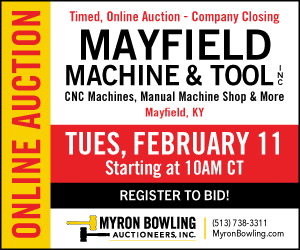
Courtesy of TDM Systems
TDM’s 3D Designer for End Mills software uses four individual milling cutter parts—toolholder, trunk, front side and flute—to enable a user to create the desired endmill.
Users of TDM Systems Inc.’s software for tool data management often talk about the lack of data and graphic images for designing endmills. The multiplicity of existing tools, which typically differ in detail, makes it difficult to obtain high-quality data and images. Because of the variety and complexity of endmills, the tool drawing typically had to be done by hand, which takes a lot of time to complete.
To better support its software users, TDM Systems has tackled the problem by developing the TDM 3D Designer for End Mills data generation software. The principle is simple: a user creates the desired endmill with four individual milling cutter parts that can be flexibly assembled.
The software offers the ability to design endmills with the help of graphics parameters and sample data sets from 3-D models. Utilizing the graphic models within TDM, the user can choose four distinct characteristics of an endmill and then address the various parametrics involved with the tool to quickly create an accurate representation of the desired endmill.
The parameters required for generating tools come with the software; the user inputs them directly into the system according to each tool’s individual characteristics. In the “configuration” tab, the user can generate any combination of shanks, trunks and front-side elements for an individual tool. After defining the geometry data and selecting tool dimensions on the “geometry” tab, the user clicks “start” to build the 3-D model. A detailed endmill along with parametrics can be generated within minutes.
Based on the data, the software creates a data record with all the relevant geometric data, including 2-D and 3-D graphic tool images. By selecting the “data transfer” button, the end user starts transferring the data into TDM’s master database.
The 3-D tool images are generated in SAT, STL and Step formats, as well as the native formats of NX Siemens and CATIA V5. The images can then be immediately used for simulations.
Access to the endmill generator is gained through TDM’s module, the TDM Data and Graphic Generator module. This module has more than 40,000 different tooling macros included inside of it.
The TDM 3D Designer for End Mills software requires TDM Version 4.3.1.2. There is also a TDM 3D Designer available for creating step drills. CTE
About the Author: Chris Rezny is TDM Systems Inc.’s executive account manager for the Midwest. TDM Systems develops software for the management of tool data and plant resources and was selected by the Sandvik Group as its competence center for tool data management. However, an end user can utilize any toolmaker’s information and tool style as long as the relevant data is in a format that can be imported into TDM’s database. For more information, call TDM Systems, Schaumburg, Ill., at (847) 605-1269, visit www.tdmsystems.com or enter #340 on the I.S. form.
Related Glossary Terms
- 2-D
2-D
Way of displaying real-world objects on a flat surface, showing only height and width. This system uses only the X and Y axes.
- 3-D
3-D
Way of displaying real-world objects in a natural way by showing depth, height and width. This system uses the X, Y and Z axes.
- endmill
endmill
Milling cutter held by its shank that cuts on its periphery and, if so configured, on its free end. Takes a variety of shapes (single- and double-end, roughing, ballnose and cup-end) and sizes (stub, medium, long and extra-long). Also comes with differing numbers of flutes.
- gang cutting ( milling)
gang cutting ( milling)
Machining with several cutters mounted on a single arbor, generally for simultaneous cutting.
- milling
milling
Machining operation in which metal or other material is removed by applying power to a rotating cutter. In vertical milling, the cutting tool is mounted vertically on the spindle. In horizontal milling, the cutting tool is mounted horizontally, either directly on the spindle or on an arbor. Horizontal milling is further broken down into conventional milling, where the cutter rotates opposite the direction of feed, or “up” into the workpiece; and climb milling, where the cutter rotates in the direction of feed, or “down” into the workpiece. Milling operations include plane or surface milling, endmilling, facemilling, angle milling, form milling and profiling.
- milling cutter
milling cutter
Loosely, any milling tool. Horizontal cutters take the form of plain milling cutters, plain spiral-tooth cutters, helical cutters, side-milling cutters, staggered-tooth side-milling cutters, facemilling cutters, angular cutters, double-angle cutters, convex and concave form-milling cutters, straddle-sprocket cutters, spur-gear cutters, corner-rounding cutters and slitting saws. Vertical cutters use shank-mounted cutting tools, including endmills, T-slot cutters, Woodruff keyseat cutters and dovetail cutters; these may also be used on horizontal mills. See milling.







